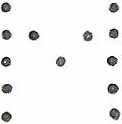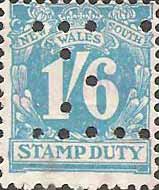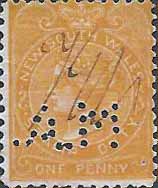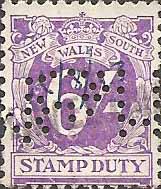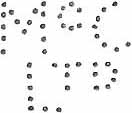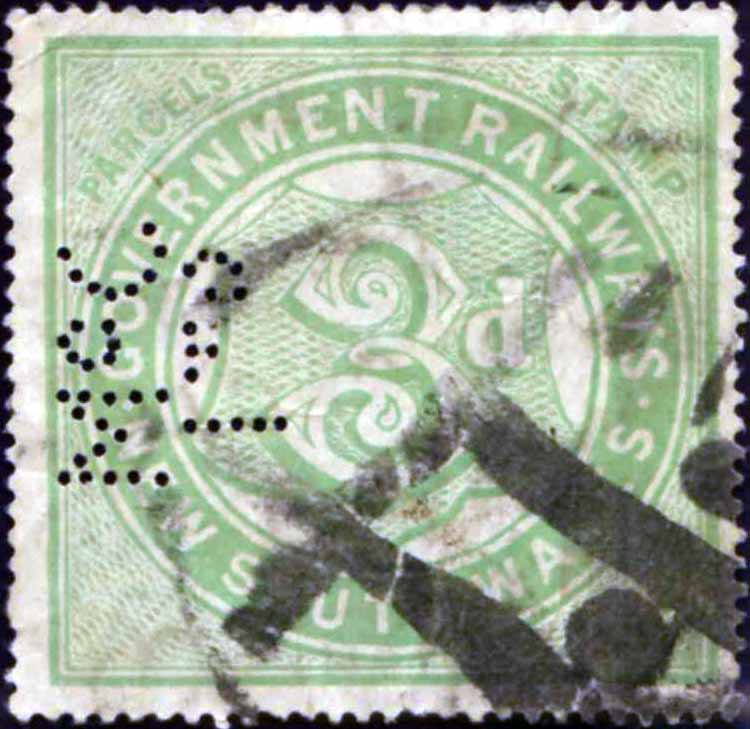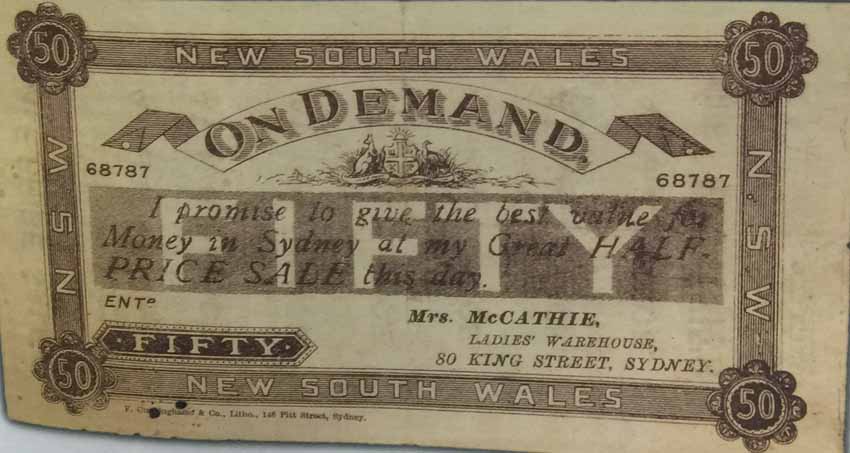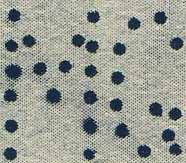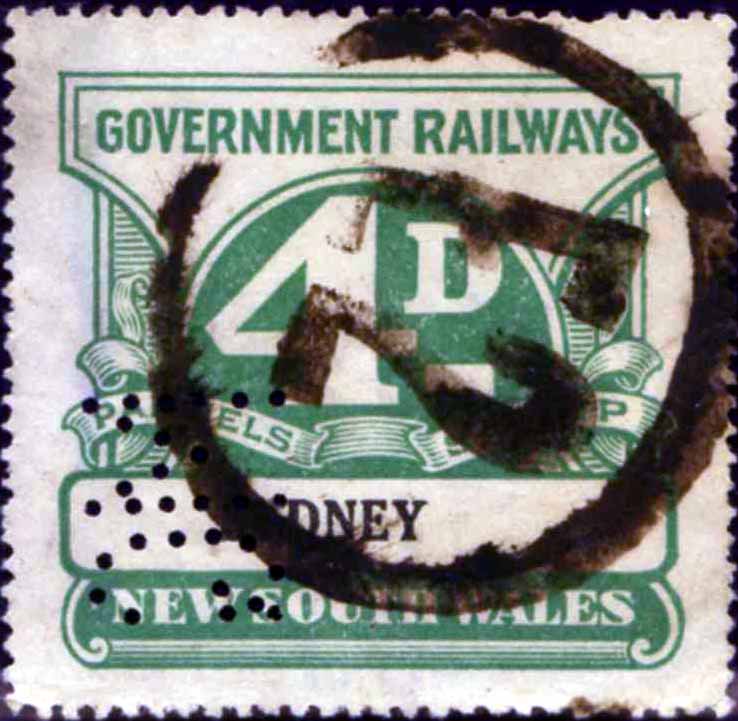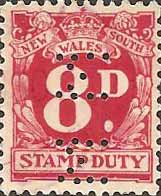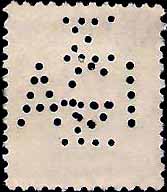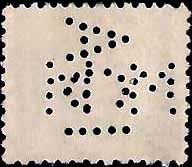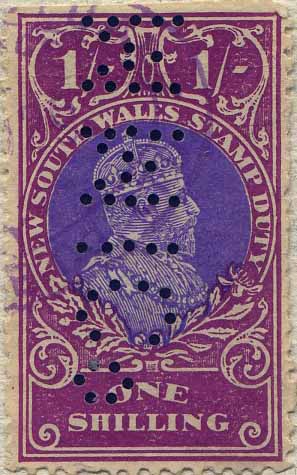|
Private Revenue Perfins of New South Wales An Elsmore Coath production The authors would welcome your comments additions or input into this work A B C D E F G H I J K L M N O P Q R S T U V W Y Other M -------------------------------------------------------- M.a
User: Manufacturers Mutual Insurance Co Insurance Provider Address: 12 O’Connell St, Sydney, NSW Revenue Use: Numeral 1929-66 issue 3d, 3d[no wmk], 6d, 9d, 1/-, 1/6, 2/-, 3/-, 4/-, 5/-, 6/-, 8/-[brown], 10/-, £1, £5, £10 Decimal 1966 1c, 3c, 4c, 5c, 10c, 15c, 30c, 40c, $1, $3, $20 Rarity Scale: Numeral 1929-66 issue 3d R2, 3d[no wmk] R3, 6d R1, 9d R2, 1/- R1, 1/6 R1, 2/- R2, 3/- R2, 4/- R1, 5/- R1, 6/- R1, 8/-[brown] R3, 10/- R2, £1 R2, £5 R4, £10 R4 Decimal 1966 1c R4, 3c R4, 4c R4, 5c R4, 10c R4, 15c R4, 30c R4, 40c R4, $1 R4, $3 R4, $20 R4 Background: *In 1912 (some sources 1914), the Chamber of Manufactures of NSW established the Manufacturers Mutual Accident Insurance Association Limited. The company was created to provide insurance cover to employers against claims by injured employees and this was in response to the new Workmen's Compensation Act of 1910. The company was renamed Manufacturers Mutual Insurance, (MMI) in 1920 and they expanded into the Queensland market in 1933. In 1935 the company moved into its newly built head office at 12 O’Connell Street, named ‘Manufacturers House’ which they shared with the NSW Chamber of Manufacturers. The company continued to grow in both NSW and Queensland and by 1951 they had 26 branch offices throughout these States. In 1960 MMI acquired the 'The Western Australian Insurance Company Limited', and as a result extended operations to Victoria, South Australia and Western Australia. The company expanded further with the acquisition of 'Chamber of Manufacturers Insurance' in 1989 and the 'Switzerland Insurance Australia Limited' in 1983. In 1994 MMI was listed on the Australian Stock Exchange and in 1998 it was taken over by Allianz (Insurance) who had also acquired the workers compensation business of the failed HIH Group. Although MMI initially continued to trade under its own name it was rebranded as Allianz Australia in 2000. Device: The M.a device is only found used on the revenues stamps of NSW and it came into service in late 1958 and was still in use in 1966. It is most likely a single die device as strikes on multiples do not show any consistent relationship to each other.
The device produces a pattern, which is rather large and certainly oversized for the smaller format NSW numeral revenues that it was mainly used on. This seems odd as the device was purchased in the late 1950’s and by this stage the numeral revenues had been in use for almost 30 years.
Because of its size the pattern can often appear as a partial and there are sometimes multiple strikes, which can be confusing to identify and may appear similar to other large format patterns such as LL.a. Related Patterns: Nil *Wikipedia
*Allianz web site -------------------------------------------------------- M.A..a
User: M.A. (unknown) Revenue Use: QV 1880 issue 1d Rarity Scale: QV 1880 issue 1d R5 Background: Unknown Device: The MA.a pattern is extremely rare and the authors have sited only a single example. This is peculiar as the device seems to be customised perforator which are reasonably expensive and normally only purchased by companies with large mail volumes or frequent use of revenues stamps. Hence more examples tend to survive. The pattern has only been seen on the revenue stamps of NSW. It appears to be or English manufacture by its style and format but there is not much else that can be gleaned from the pattern. It could be part of a larger pattern. Assuming it is an MA in position 5, there could be another letter after the A. Further if we consider that the pattern is struck in position 1, and therefore AM rather than MA, then it is possible that there could be another letter or letters preceding the A. There is also a possibility that the strike is from a foreign device, but it is not one that is listed in either the GB or US catalogues. More examples will need to be found for the story of this device and pattern to be known. Related Patterns: Nil -------------------------------------------------------- M&B.a
User: A D Meares and Bishop
Stockbrokers
Address: 33 Bligh St, Sydney, NSW Revenue Use: Numeral
1929-66
issue 3d, 4d[pink], 6d, 9d,
1/-, 1/6, 2/-, 3/-, 4/-, 5/-, 6/-, 8/-[brown], 10/-,
12/-, 14/-, 18/-, £1, 30/- Decimal 1966 1c, 2c, 4c, 8c, 10c, 15c, 50c, 60c, $1, $1.40, $1.80, $2, $3 Rarity Scale: Numeral 1929-66 issue 3d
R3, 4d[pink]
R4, 6d
R3, 9d R1, 1/- R3, 1/6 R2, 2/- R2, 3/- R3, 4/-
R4, 5/- R4, 6/- R4, 8/-[brown] R3, 10/- R4, 12/-
R4, 14/- R4, 18/- R4, £1 R4, 30/- R4 Decimal 1966 1c R4, 2c R4, 4c R3, 8c R4, 10c R3, 15c R4, 50c R4, 60c R4, $1 R3, $1.40 R4, $1.80 R4, $2 R4, $3 R4 Background: Alfred
Meares was born in Sydney in November 1904 and in
1926 he became a clerk at the Sydney Stock
Exchange. In 1932 he took a seat at the Sydney
Exchange and worked for a small group of private
clients.
After an absence for
military service in World War 2 he returned to his
seat and in 1949 he went into partnership with
Jesse Bishop as A D Meares and Bishop.
Jesse Bishop had been
born in Sydney in 1907 and was educated at Sydney
University but completed his studies at Cambridge
in England. Graduating in 1934 he worked for the
Imperial Smelting Corporation for a short period
before gaining a position with the stockbroking
firm W Thompson and Son. and later Dormer Rumball
and Co. in which he secured a partnership and a
seat on the London Stock Exchange in 1940.
As with his future
partner his career was punctuated by the war.
After the war he worked in the legal department at
Shell before returning to Australia for family
reasons in 1948.
In 1949 he joined the
Sydney Stock Exchange as a sole trader but soon
joined fellow sole trader Meares. The partnership soon
moved from its small client base to become
involved in some major share floats including
Yates Seeds, Ampol Exploration, Canberra
Television, J B Young and Thomas Nationwide
Transport (TNT).
Bishop remained with
the firm until 1965 and Meares retired from his
role in the firm in 1970.
Device: The M&B
pattern is found on the revenue stamps of
Queensland, New South Wales, Victoria, Tasmania as
well as Western Australia. All of the strikes are
identical and Meares and Bishop are not known to
have had offices or seats on Stock Exchanges other
than in Sydney. Given this it is reasonable to
assume that the device was located in Sydney and
applied to revenue stamps of various States as
required to process transactions within the
jurisdiction of a given State revenue office. This
is supported by company stamps applied to
documents that all show the Bligh Street, Sydney
address.
Multiples of this
pattern show an inconsistent relationship to each
other so the device is most likely a single head
one. This is supported by the fact that the
strikes are identical which is less likely on a
multiple die device, which often show variation
between dies.
The M&B device is
only found on revenue stamps and the use on
documents shows that the stamps are punctured
prior to being affixed, indicating use as a
security device rather than a cancelling device.
The use as a security device to prevent theft is
further supported by the fact that once affixed
the stamps are then cancelled either by pen,
company cachet or circular punch.
The device was used
between 1962 and 1967.
Related Patterns:
Refer to other usage of this A D Meares and Bishop
device in:
QLD:
M&B.a
TAS:
M&B.a
VIC:
M&B.a
WA:
M&B.a -------------------------------------------------------- McC/LTD.a
User: Mrs. McCathie Ltd General Outfitters Address: 80 King St, Sydney, NSW Later from 1905: 197-201 Pitt St, Sydney, NSW Revenue Use: QV 1880-1902 issue 2d Rarity Scale: QV 1880-1902 issue 2d R4 Railway Use: 1914 issue 1d, 3d Rarity Scale: 1914 issue 1d R4, 3d R4 Background: *Harriette Adelaide Colgan (later McCathie) was born in Dublin, Ireland, in about 1840 and in June 1857 she married John Seybourne, a draper, and they had three children. John died in 1860 and Harriette remarried, marrying Christopher Bailey in March 1861 and together the family migrated to New Zealand, arriving at Auckland in the Ganges on 12 October 1863. Christopher and Harriette Bailey took a farm near Auckland and the couple had four children. By 1871 Harriette was living in Sydney and this lead Bailey to divorce her. Harriette then married David Henderson McCathie, an accountant of Scottish decent on 11 September 1879. David McCathie worked for John Vicars who had a large Tweed Mill in Sussex St, Sydney. David died on 13 October 1882, survived by Harriette and their three children and he left an estate valued at £400. Harriette purchased a house in Ashfield, and took a position as a milliner at Farmer & Co. Ltd, and then in September 1886 she obtained a mortgage to establish her own business, Mrs McCathie's Hat Shop (later 'Ladies Warehouse') at 80 King Street, Sydney. Harriette was an astute and hard-working woman and she built up a thriving retail outlet. In the 1890s she expanded into women's clothing, and general drapery and this necessitated several extensions to the premises, and later in 1905, relocation to more spacious premises in Pitt Street, next to the Strand Arcade. Mrs McCathie Ltd was registered as a limited company on 13 July 1905 and soon after she retired, although due to the nature of the memorandum of the company and her share-ownership she maintained considerable influence in the company. After 1905 the company was headed by her son David McCathie and son-in-law Ernest Edward Brown. Harriette lived in a separate residence on the Browns' estate, The Highlands, at Gordon. Harriette died on 11 April 1912 at St Kilda, Melbourne, while on a visit to her daughter Florence Manisty. She left an estate valued at over £50,000, a remarkable achievement for a women, alone and with only modest means, in a male dominated society. Device: The McC/LTD.a device was most likely a single dies format as multiple strikes do not show any consistent relationship to each other. Further the device can make single strikes on a range of stamp formats, including the large NSW Railway stamps. The pattern is characterised by an incomplete C, In fact the authors are yet to see an example with a complete C so it is presumed that the damage to the device occurred very early in its use or indeed in transit before delivery. The device was never repaired and this consistent variation to the pattern is further evidence that the device had but a single die, as if it had more than one die the same missing pins would need to have been missing on each of the other dies. The pattern is found used on the revenue stamps, the railway parcel stamps and the postage stamps of NSW from about 1910, and then on the postage stamps of Australia until at least 1918. Late use shows more missing pins in the C and much of the LTD. Related Patterns: Nil *Australian Dictionary of Biography Store Advertising Note -------------------------------------------------------- MG..a
User: MG (unknown) Railway Use: 1948 Numeral issue Rarity Scale: 1948 Numeral issue 4d R5 Device: The MG.a device is most likely a single die device as it produces single strikes on the larger format NSW railway stamps. The pattern is found on the railway stamps of NSW as well as the postage stamps of Australia from at least 1928 (most likely earlier) until about 1942. Dating the usage accurately is hampered by the fact that the pattern is normally found with parcel cancellations and on railway parcel issues and these do not provide good postmark date evidence. Related Patterns: Nil -------------------------------------------------------- MM.a.b.c
.a .b .c
User: Merchantile Mutual Insurance Co Insurance Provider Address: 16 Martin Place, Sydney, NSW Later from 1929: 117 Pitt St, Sydney, NSW Revenue Use: Numeral 1929-66 issue 3d, 4d, 6d, 8d, 9d, 1/-, 1/6, 2/-, 2/6, 2/6[orange], 3/-, 4/-, 5/-, 6/-, 8/-[brown], 8/- [orange], 10/-, 14/-, £1, £5 Decimal 1966 1c, 3c, 4c, 15c, 20c, 30c, 50c, 60c, $1, $2, $3, $10 Rarity Scale: Numeral 1929-66 issue 3d R2, 4d R1, 6d R1, 8d R1, 9d R1, 1/- R1, 1/6 R1, 2/- R1, 2/6 R1, 2/6[orange] R4, 3/- R1, 4/- R1, 5/- R2, 6/- R1, 8/-[brown] R3, 8/- [orange] R4, 10/-, R2, 14/- R3, £1 R1, £5 R4 Decimal 1966 1c R4, 3c R4, 4c R4, 15c R4, 20c R4, 30c R4, 50c R4, 60c R4, $1 R4, $2 R4, $3 R4, $10 R4 Background: *Mercantile Mutual was established in Sydney in 1878. The idea to establish a distinctly Australian insurance company had been discussed amongst a group of Sydney businessman in the previous year while they were attending the cricket match to decide the team to travel to England for the first Test series
The company grew quickly reflecting the booming Colonial economies of the time and they established offices initially in Sydney, but later in Melbourne, Brisbane and Adelaide, all in the first year of operation. In addition they sought and received many offers to provide agencies from Regional centres throughout New South Wales, Queensland and Victoria.
The head office of the company was located in a series of offices in Pitt Street, Sydney, initially 177, then 168, 158 and 131, before the company purchased a property at 120 Pitt St, on which they built a purpose built office, occupying it from 1886.
Growth was hampered by the hard economic times of the late 1880’s and 1890’s and this lead to some shrinking of the Melbourne and Brisbane offices and the closure of the Adelaide office, but by 1894 the company boasted of being the largest insurer in Sydney.
The company resumed growth with the new century and expanded offices in Melbourne in 1901 and Brisbane, in 1912 and established a branch in Hobart in 1918, with an office in Launceston and later in Devonport. The Brisbane office was initially at the corner of Queen and Eagle St's but in 1926 they purchased and moved to premises at 62 Eagle St.
The Sydney office had been relocated to 16 Martin Place before a new head office was established in 1929 at 117 Pitt St. In 1938 they established a branch in Perth replacing their agency, which had been established in 1920.
Through the 1950s, 60s and 70s the company continued to grow with the acquisition of Oceanic Insurance, Australian General Insurance and Australian Metropolitan Life.
In 1982 Mercantile Mutual became part of the ING Group when ING acquired 50% of the company. In 1987 ING acquired 100% of Mercantile Mutual and the company changed its name to ING Australia in 2001.
In 2002 ING Australia was partially acquired by the ANZ and in late 2009 ANZ acquired 100% of ING Australia.
Device: The MM.a/.b/.c device was a three die device in a horizontal array. This is a common format of perfin device used by other Sydney companies and in particular Insurance companies.
The patterns are distinctly different and as a result they are listed as separate patterns even though they are dies of a single device.
It is interesting to note the changes to the character of the central die, MM.b over time. Initially it was similar to the other dies but in the 1940’s the pattern appears to alter and the right hand leg of the right hand M becomes curved. Later in the mid 1950’s the left hand shoulder of the left hand M appears to collapse slightly. Oddly the MM.a and MM.c dies do not alter over the same period.
The patterns are found on the revenues stamps of NSW from as early as 1937 until at least 1966. They are also found on the postage stamps of Australia from 1938 until 1965. Late usage on postage stamps is rare and some previous publications have reported usage as late as 1974 for these patterns. This is not the case and is merely miss identification and/or miss reporting of the larger format MM.c device used in Melbourne over the period 1939-1978. (see Victorian chapter).
Related Patterns: Refer to other Mercantile Mutual and related company patterns in:
NSW: AGI.a AGI.b MMICO.a MMICO.b
QLD: Other – Section 1 Commercial Perfins and Cancelling Devices
Mercantile Mutual/Ins.Co.Ltd.Bris.a
TAS: MM.a
VIC: MM.a MM.b MM.c
*Servant of a Century - 'The first 100 Years of the Mercantile Mutual Insurance’ H. Mayfield (1978)
--
See AGI.a -------------------------------------------------------- MMICo.a.b
.a .b
User: Mercantile Mutual Insurance Co Insurance Provider Address: 16 Martin Place, Sydney, NSW Revenue Use: KEDVII 1909-28 issue 4d, 8d, 1/-, 2/-, 2/6, 3/-, 4/-, 5/-, £1 Numeral 1929-66 issue 4d, 8d, 3/-, 4/-å Rarity Scale: KEDVII 1909-28 issue 4d R4, 8d R4, 1/- R3, 2/- R3, 2/6 R4, 3/- R3, 4/- R4, 5/- R3, £1 R4 Numeral 1929-66 issue 4d R3, 8d R4 3/- R3, 4/- R2 Background: See MM.a, MM.b and MM.c above. Device: The MMIC.a and MMIC.b device is a two die device in a horizontal array. The two dies are distinctly different and the easiest way to tell them apart is the height of the C. In MMIC.a the C is rather short while the MMIC.b has a full height C. The device came into service in about 1927 and it produced patterns, which, are rather large and are not suitable for use on postage stamps. The layout of the device seems to have been designed to make strikes in positions 2,4, 6 & 8 in the large format Edward VII bi-colour revenues of NSW. Rather cruelly in 1929 the NSW Government introduced the smaller format NSW numeral revenues and the MMIC.a/.b device was ill suited to making strikes on these issues. Some strikes do exist but they are rare and are always as partials. The company appear to have forgone the use of perfin or other security practices until the introduction of the MM.a/.b/.c device in about 1937. Related Patterns: Refer to other Mercantile Mutual and related company patterns in:
NSW: AGI.a AGI.b MM.a MM.b MM.c
QLD: Other – Section 1 Commercial Perfins and Cancelling Devices
Mercantile Mutual/Ins.Co.Ltd.Bris.a
TAS: MM.a
VIC: MM.a MM.b MM.c -------------------------------------------------------- A B C D E F G H I J K L M N O P Q R S T U V W Y Other © copyright 2011 |
